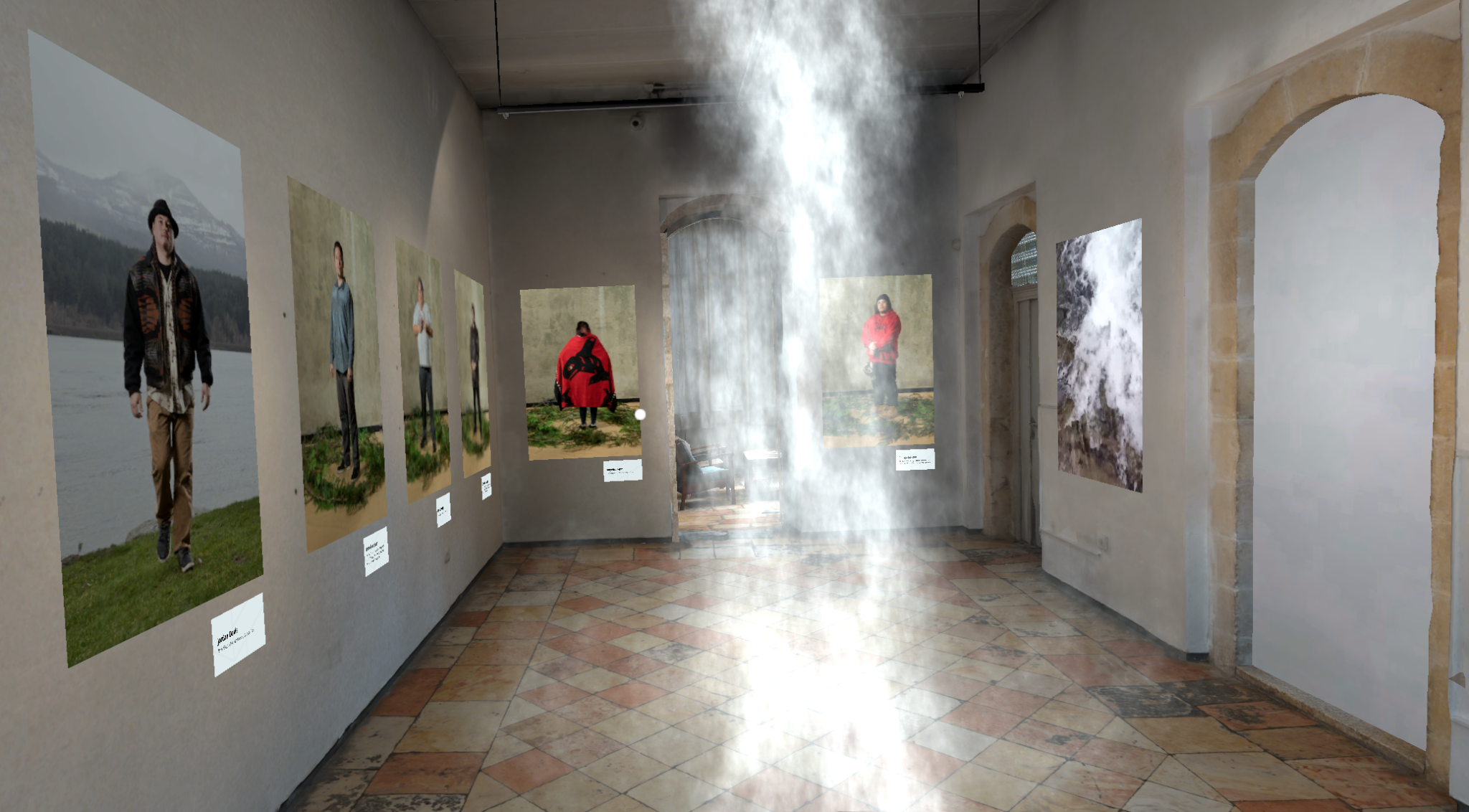Because the begin of the coronavirus, museums have struggled to search out methods to just about seize their viewers.
One museum, Musrara, the Naggar College of Artwork and Society in Jerusalem, just lately took the plunge with its newest exhibit — a digital photographic and video take a look at the Native American world with the assistance of 3D developer Tal Haring, who created VMUMU, a new virtual space at Musrara for exhibits.
“There’s been a whole lot of video executed with curators, and it’s an answer, however it’s not probably the most partaking,” stated Haring, who teaches three-dimensional and interactive video at Tel Aviv College and different establishments. “It mainly finally ends up being like a Google Road View of the museum.”
In Haring’s VMUMU, customers use their laptop mouse (or keyboard arrows) to discover three galleries of Musrara’s historic construction, the place the museum college students and artists portrayed their video and portrait works.

The digitized entrance to Jerusalem’s Musrara museum, now utilizing 3D imaging to point out a brand new exhibit to guests (Courtesy Musrara)
The exhibit itself nearly turns into an apart on this experimental technique of museum go to (which includes quantity of trial and error on the a part of the consumer).
Maneuvering round takes some getting used to, however as soon as one is accustomed to utilizing the pc mouse or arrows on the keyboard to maneuver across the display, it’s simpler to deal with what’s on show — on this case, the portraits, sounds and symbols of the Native American society.
Titled “The Smoking Mountain Lawetlat’la,” the exhibit relies on an trade program the Musrara college students took half in with Wisdom of the Elders, an American group that works to protect Native American tradition.
The Musrara college students and Avi Sabag, Musrara’s director, founder and curator of this exhibit, visited Native American reservations and communities in Oregon and Washington State final winter, simply earlier than the coronavirus.
It’s exhausting to think about that they had been within the Native American world only a few months in the past, wrote Sabag on the exhibit web site, however their experiences and the need of discovering new methods to current their works led Sabag and Haring to forge this new digital path.
The exhibit brings to life the folks they met and the rituals they found via portraits, video and sound.

The primary gallery in Jerusalem’s Musrara museum, now utilizing digital actuality to show a brand new exhibit in the course of the 2020 coronavirus (Courtesy Musrara)
Haring scanned Musrara’s galleries whereas nonetheless empty, after which labored with Sabag to create a digital exhibit of the artworks which might be just about “hung” on the museum’s partitions.
The “Smoking Mountain” exhibit is the primary being proven within the digital gallery, and different reveals will open up in the identical digital area.
“It makes it right into a digital museum,” stated Haring. “There’s a gap for endless creativity, since you see Musrara the constructing, however there’s ambiance as effectively.”
Haring and his brother, Yuval Haring, had used the primary weeks of the coronavirus to brainstorm artistic concepts for cultural shops, beginning with digital events that used three-dimensional scanning to create digital worlds, scanning Tel Aviv streets and hangars and producing on-line raves attended by folks’s avatars.
“It was completely bizarre and campy however it actually introduced us someplace,” stated Haring. “Everybody was on the lookout for leisure and we got here up with an answer.”
Now he’s bringing his concepts to the extra established cultural world, and specifically to museums, which wish to proceed creating reveals however are stymied by closures.
The three-dimensional expertise and digital actuality viewing supply guests the prospect to immerse and have interaction themselves, with out trying up and down the display and seeing flat objects, stated Haring.
“It’s a dialog that’s getting going now due to the coronavirus,” he stated. “Folks didn’t perceive why we would have liked these applied sciences and now they do.”
The usage of 3D and digital actuality has already been going down within the music and gaming world, with rapper Travis Scott performing as a digital avatar in a ten-minute live performance produced by online game “Fortnite,” watched by greater than 12 million gamers after which replayed 4 occasions, for a complete of 27.7 million players.
Then Grammy award-winning singer John Legend used digital animation to seize his actions on a dwell stream that had been then transmitted to a digital avatar for a dwell 17-minute live performance in assist of his marketing campaign to finish mass incarceration for African People.
“This dialog is now opening up, and it’s about discovering digital options on the planet of artwork,” stated Haring.